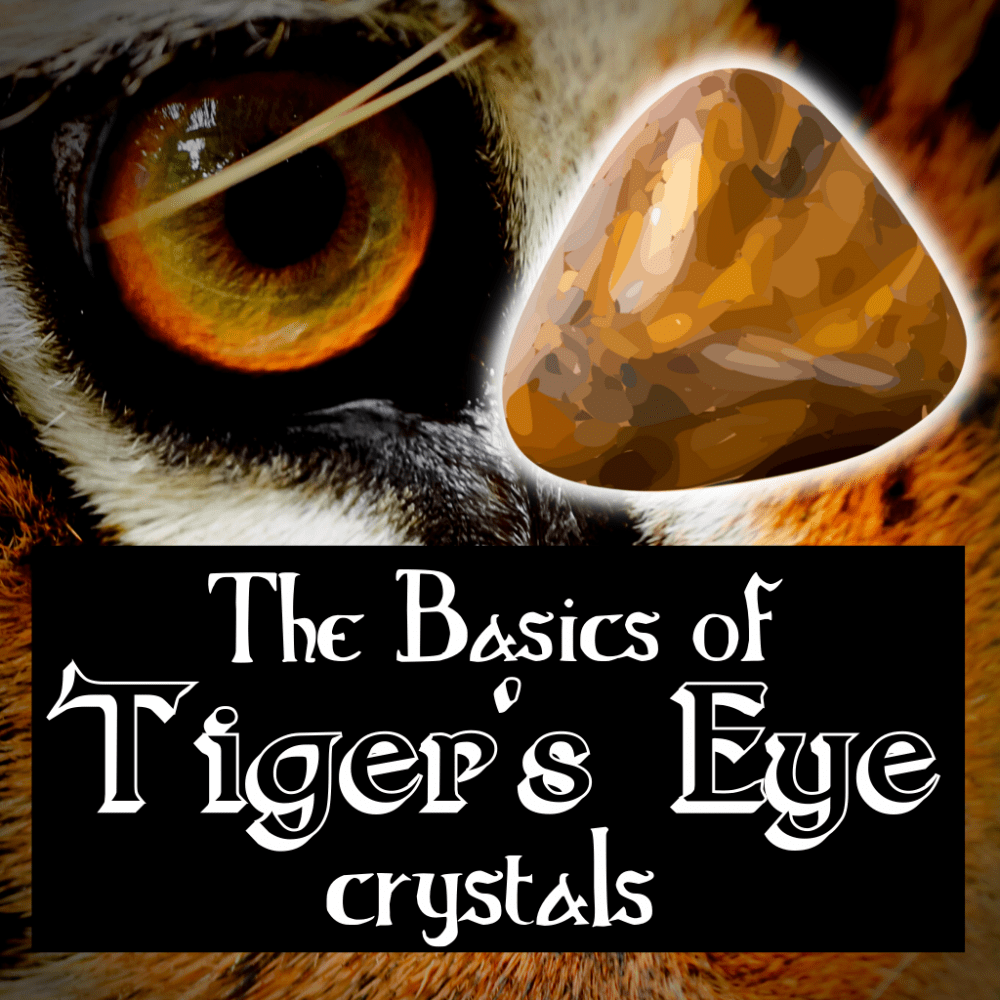
Learn about the crystal Tiger’s Eye. What is it, how to identify it, common folklore, metaphysical uses, correspondences, and more!
This post may contain affiliate links and I may earn a small commision when you click on the links at no additional cost to you! Thank you in advance for helping to support Feralwood Farm.
What is Tiger’s Eye?
Tiger’s eye is a metamorphic pseudomorph (a crystal consisting of one mineral but having the form of another which it has replaced) of quartz, a silicate mineral, and member of the Chalcedony crystal family. It is formed by the silification of crocidolite into Hawk’s eye crystal, and then is transformed into Tiger’s eye by the partial oxidation of Fe2+ (oxidated iron) in the crocidolite into goethite. When polished this stone shows a chatoyancy, meaning a bright band of reflected light, looking akin to a cat’s eye.
The name Tiger’s eye comes from the crystals coloration resembling that of tiger stripes, and the “eye” refering to the chatoyancy of the crystal.
Locations where Tiger’s Eye is Found Naturally
- Afghanistan
- Austrailia
- Brazil
- Burma
- Canada
- China
- India
- Indonesia
- Kenya
- Korea
- Madagascar
- Namibia
- South Africa
- Spain
- Tanzania
- Thailand
- United States
- Zambia
This crystal can also be created in a lab-style environment in a process that mimics what happens naturally in the Earth. These crystals are typically identical to their mined counterparts.

Similar Crystals or Variants
We already mentioned the Hawk’s Eye crystal which is the closest mineral relative, and is also formed by the silification of crocidilite.
Tiger Iron (or Tiger’s Eye Matrix) is another similar crystal, but in addition to the Tiger’s Eye mineral it also contains infusions of red jasper, and black hematite; making very unique bands of coloration.
Marra Mamba Tiger’s Eye is a specimen found in Western Austrailia, comtaining very bright and relflective golden brands. This variety tends to be a little more expensive than your standard crystal.
Arizona Tiger’s Eye is actually a type of serpentine containing bands of chrysotile. It can come in serveral color variations ranging from amber with golden flashes, to green with silver flashes.
Tiger’s Eye crystals themselves can be manipulated into a variety of ways; such as heat-treating to become a darker red, for Red Tiger’s Eye. The color can similarly be manipulated by bleach or dye, creating a lighter “golden” or vibrant colors such as greens, purples, and blues.
Sometimes artificial glass is used to create imitation crystals of various colors.
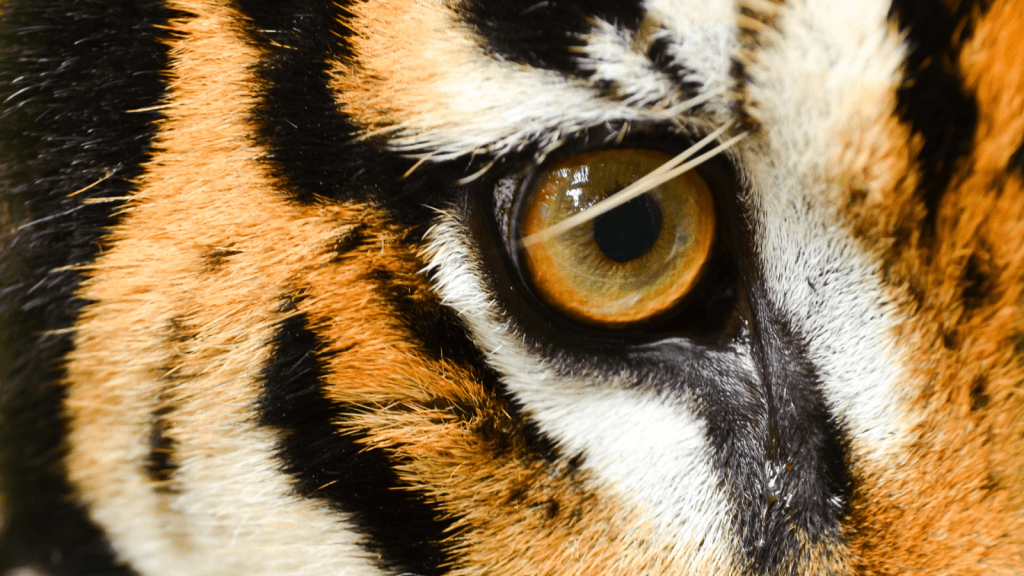
Geological Identification of Tiger’s Eye
- Color: golden amber to reddish brown, often streaked
- Transparency: opaque
- Luster: silky, glassy, vitreous
- Cleavage: none
- Fracture: conchoidal
- Hardness: 7
- Streak: yellow brown
- Chemical Formula: SiO2
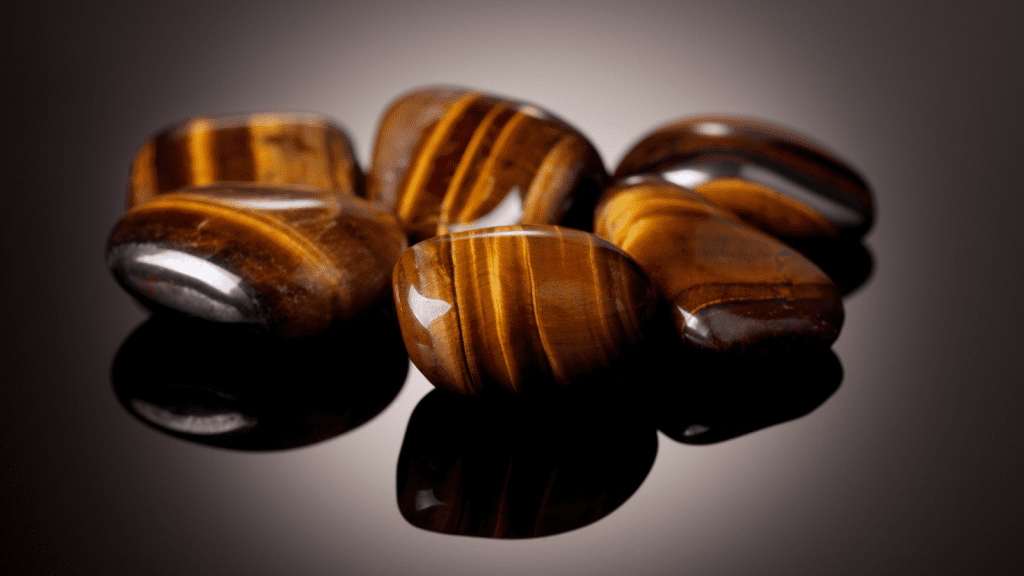
Crystal Care
Sun Exposure: Can be exposed to sunlight, but recommended to not leave in direct sunlight for more than 12 hours due to potentially causing a slight fading in coloration.
Water Exposure: This crystal is safe to submerge in water. Saltwater is ok for short periods of time but not recommended for long-term exposure.
How to Clean this Crystal: Clean your crystal by running water over it, and scrubbing with a smalll amount of soap if necessary.
Other Notes on Care: If your crystal is one of the dyed varieties (green, purple, or other bright colors) avoid sudden temperature changes, chemicals, steam, or ultrasonic cleaners.
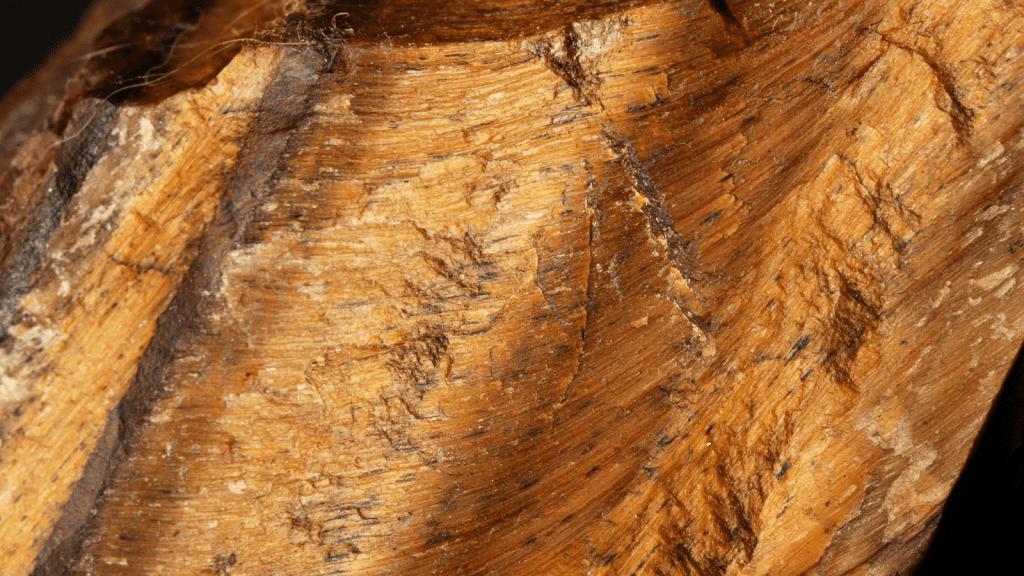
Folklore & Fun Facts
- Worn in many cultures as a protective amulet, some specifically to help ward off the Evil Eye
- Was commonly used as the eyes for statues in Egypt, and was heavily connected to the dieties Ra and Geb
- Worn by Roman soldiers for protection from enemies and to encourage bravery in battle
- Regarded as a stone of prosperity and good fortune, protecting that which you have and reflecting harm back to others.
- Holding this crystal was said to tell if someone was loyal or not, and if found unloyal their secrets would be revealed by the end of the day
- Referred to as the “Wolf-Stone” and was dedicated to Belus, (Bel Marduk), a war god of Mesopotamia
- Was said to restore both Yin and Yang energies in Chinese Medicine
- There is a supposedly cursed (and missing) Tiger’s Eye ring
Metaphysical Properties of Tiger’s Eye
- Use to help balance emotions and focus your thoughts
- Great for encouraging a flow of income, especially entrepenurial income
- Helps to overcome boundaries in your way, particular those such as fear, or complacency
- Use to help find the truth or gain insight into a particular situation
- Brings harmony between people who aren’t getting along
Tiger’s Eye Correspondences
- Chakras – Root Chakra, Solar Plexus, Sacral Chakra
- Zodiac – Gemini, Capricorn, Leo
- Planet – Sun
- Element – Earth & Fire
- Vibration – 3
- Day of the Week – Thursday
- Dieties – Ra, Geb, Belus, Bast, Freyja, Sekhmet, Persephone
- Body – Endocrine system, Metabolism, Blood, Eyes, Throat

Magickal Workings to Try with Tiger’s Eye
- Balance
- Confidence
- Courage
- Enhancing psychic abilities
- Focus
- Loyalty
- Protection
- Strength
- Stability
- Truth
- Willpower
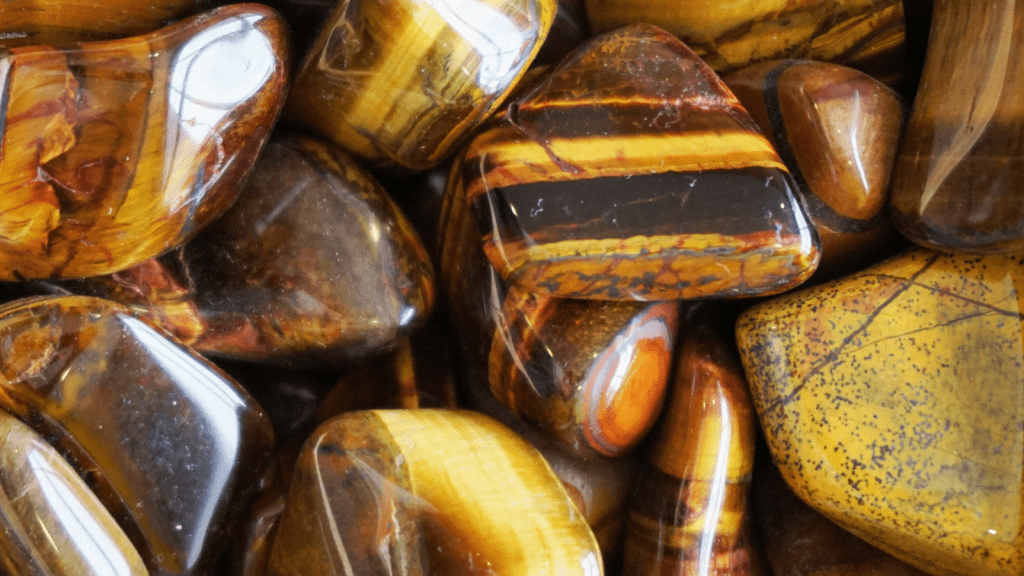
More on Crystals
Check out the full Crystal Compendium here!
Pin it for Later
Did you know I use Canva to make all the graphics I use here on my website? Click here to try it out for yourself!

Leave a Reply